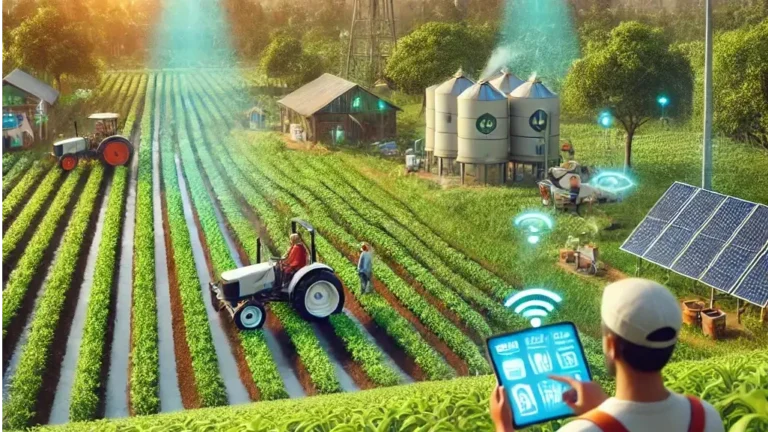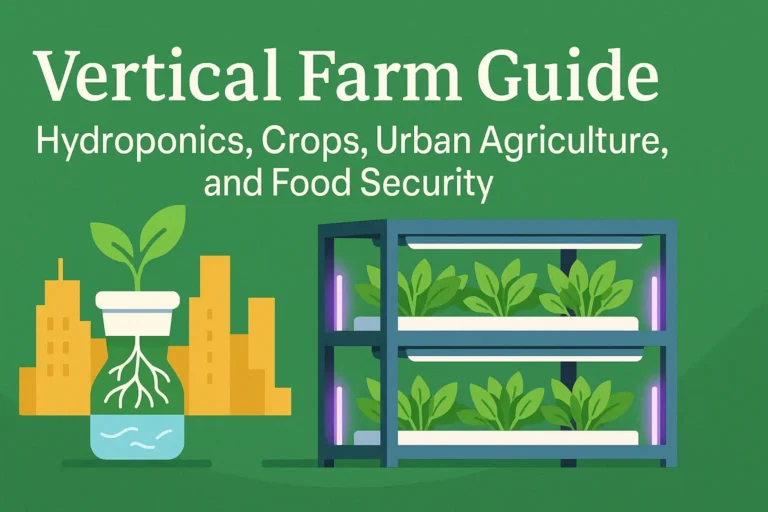Building Your First Vertical Garden System
You might be surprised how easy it is to create a vertical garden system. A few simple tools and materials can help you transform any indoor or outdoor space into a productive growing area. Let me share some DIY and ready-made options that work well for different spaces and budgets.
1. Simple DIY shelf systems
A vertical garden starts with simple shelving. Cedar posts, hex wire, and terra cotta pots create a functional garden that doubles as a privacy screen. Cattle panels or welded wire make excellent support structures. T-posts cost about ₹337.52 each and work great for holding up trellises. You can create an extensive vertical growing space with 600 inches of welded wire at ₹2,953.32 [7].
Building a frame from 2’x4′ lumber with planter boxes and shelves gives you space for pots. Adding planks to the sides and top creates a solid structure that supports the weight of soil and plants.
2. Wall-mounted vertical gardens
Wall gardens put unused vertical space on fences and walls to good use. A reinforcing mesh secured to your wall creates an ideal framework for hanging planter boxes. Planters made from decking timber add a rustic look that enhances any outdoor space.
Indoor spaces benefit from felt pocket planters mounted with screws. These pockets hold soil and plants, creating a living wall that enhances visual appeal and air quality.
3. Repurposing household items
Your household objects can become budget-friendly planters. Old picture frames take on new life when you attach small wooden boxes to the back. Cut-off plastic bottles with drainage holes work great for herbs and small plants. Empty tin cans or plastic soda bottles make excellent DIY planters once you add drainage holes.
An over-the-door shoe organizer becomes a vertical planter when filled with soil. Wooden pallets attached to walls or fences with hooks create mobile gardens.
4. Ready-to-use vertical garden kits
Commercial kits offer hassle-free solutions. Wall vertical garden kits combine beauty with functionality, and circular kits give you flexible placement options. Some wooden kits made from 100% fir provide plastic-free options with free-standing designs [5].
The market includes options like the 5-Tier GreenStalk Vertical Garden with 30 planting pockets. These kits come with everything you need – seedling pots, seed varieties, growing medium, and detailed setup and maintenance instructions.
Essential Maintenance and Care

Your vertical farm needs constant care and attention to detail. A proper maintenance routine helps your plants thrive and produce healthy harvests throughout the year.
1. Watering techniques and schedules
Drip irrigation stands out as the quickest way to water vertical farms. The system delivers water straight to plant roots and cuts waste by up to 80% compared to traditional methods. Green walls need regular watering since they have less soil than ground plantings. Most plants do better with deep, occasional watering that pushes roots downward. Water should come from the base instead of spraying from above to stop fungus and mildew growth [17].
2. Nutrient management for healthy plants
Vertical system plants need macronutrients (nitrogen, phosphorus, potassium, calcium, magnesium, sulfur) and micronutrients (iron, manganese, zinc, copper, molybdenum, boron). Careful nutrient management becomes vital for hydroponic and aeroponic systems that use pre-mixed solutions developed for different growth stages. The right pH level—between 5.5 and 6.5—is a vital part of nutrient uptake. Organic fertilizers work better than chemical ones because chemicals can harm soil quality and damage plant roots.
3. Pest prevention in indoor environments
Vertical farming reduces pest problems compared to outdoor gardening, but prevention remains key. Plant inspection should happen often to catch signs of infestation like yellow leaves or twisted foliage. Natural solutions work best—neem oil and insecticidal soap handle most pests effectively. Beneficial predators like wasps and spiders can help you maintain your garden. Flowers attract these helpful insects naturally.
4. Monitoring plant health
Regular checks catch problems early before they get worse. Monthly moisture level tests ensure proper irrigation. Yellow leaves might show that specific nutrients are missing. Plants that wilt need investigation to determine if they get too much or too little water. Light deficiency often leads to leggy plant growth.
. Modern leaf-mounted sensors track plant health with live data and show stress levels before visible signs appear.
Conclusion
Vertical farming offers a practical solution to grow fresh, homegrown produce in limited spaces. My research and hands-on experience show that success relies on careful planning, proper setup, and consistent maintenance.
A small-scale start helps you experiment with different growing techniques without breaking the bank. I recommend beginning with simple shelf systems and crops like herbs and leafy greens that need minimal attention. Once you master these simple techniques, you can move on to more sophisticated setups with confidence.
The advantages far outweigh any original hurdles you might face. Urban dwellers will appreciate the space efficiency, water conservation, and ability to grow crops year-round. The joy of picking fresh, pesticide-free produce from your living space adds immense value to this growing method.
Ready to Take Your First Step Towards Urban Farming?
Vertical gardening is just the beginning! Imagine combining it with organic farming technique or exploring the future of sustainable agriculture in India — all from the comfort of your home.
💡 Start small, grow smart, and make your balcony your green revolution!
If you want to learn farming in interesting, storytelling and funny ways then visit page desi agriverse.
FAQ (Frequently asked questions about vertical farming)
-
What is vertical farming and how does it work at home?
Vertical farming is a method where plants grow in stacked layers instead of flat fields. At home, it uses shelves, wall-mounted planters, or vertical hydroponic systems to grow herbs and vegetables in small spaces. These systems often require less water, no soil, and can be set up in balconies, kitchens, or indoors with grow lights.
-
Is vertical farming at home expensive to start?
Answer:
Not necessarily. You can start vertical farming at home with a budget as low as ₹5,000 using DIY shelves and reused containers. For a more advanced setup with hydroponics and LED lights, the cost can go up to ₹50,000. The investment pays off through higher yields and long-term savings on groceries. -
Which crops are best for beginners in vertical farming?
Answer:
Beginners should start with low-maintenance crops like basil, mint, spinach, lettuce, and chives. These plants grow quickly, require less space, and adapt well to vertical systems. Strawberries are also a great choice if you’re ready to try fruiting crops. -
Do vertical gardens need sunlight or artificial lights?
Answer:
Plants need light to grow, but not always direct sunlight. If your space lacks natural light, LED grow lights are a great solution. For most vertical farms, about 8 high-power LEDs are enough for a 10×8 ft wall. These lights mimic sunlight and help plants photosynthesize indoors. -
How do you maintain a vertical farming system at home?
Answer:
Regular care involves watering (preferably with drip irrigation), checking nutrient levels (especially in hydroponics), monitoring plant health, and preventing pests. Use natural pest control like neem oil, and test soil or solution pH monthly for best results. Consistency is key to a thriving indoor garden.





One Comment